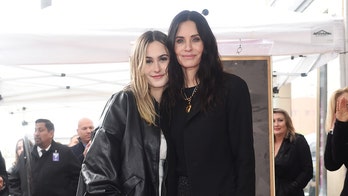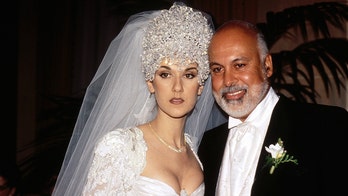Internet carriers slowing down Netflix?
Polygon.com co-founder Russ Frushtick on Netflix bandwidth issues, Microsoft’s Xbox One and Playstation 4.
ABC’s broadcast of the Oscars is one of TV’s biggest annual events. And yet the Walt Disney-owned network allowed some of the show’s sponsors to suggest to viewers that traditional TV was not what they ought to be viewing.
Netflix ran a commercial during the telecast to tout one of its original streaming-video programs. Google’s Google Play, which allows for streaming of TV shows and movies on mobile devices, made a pitch. And on New York’s WABC and Los Angeles’ KABC, cable network AMC called attention to the coming final season of “Mad Men.”
The Oscars aren’t the only place where TV has allowed new-tech video rivals to take roost. NBCUniversal allowed Amazon last year to tout its series “Transparent” on E! and gave Netflix free rein to promote kid-focused series “All Hail King Julian” on pre-schooler network Sprout. The tagline? “Now Streaming.” The unspoken message: You can watch it right now, with the press of a button. The glut of streaming-video ads fills the airwaves as more consumers pick up a subscription-video-on-demand service. According to Nielsen, 41% of U.S. homes had access in the fourth quarter of last year, compared with 36% in the same period in 2013
It’s a move tantamount to a homeowner letting termites come into a house and gnaw at its innards: TV networks are ceding valuable ad time to new competitors who use the commercial breaks to tell viewers, essentially, to use their remotes to watch something interesting on one of their services. To do so, of course, the couch potatoes must stop watching regular TV.
The conflict surfaces as more media outlets, both new-tech and old-school, are investing in content – and need to get the word out about it to monetize it properly. Netflix alone has indicated it would like to sustain 20 different original scripted series per year, a figure which would not account for millions of dollars in licensing fees the various streaming services must shell out to pick up series from TV networks and studios. TV ads have long been a haven for pitches for floor cleaner, Cadillacs and hamburgers. Now they are housing entreaties for dramas, sitcoms and documentaries, too.
See More:Time May Be Running Out For Primetime TV
An ad for Amazon’s Fire device that ran on ABC’s “Grey’s Anatomy” in November promised viewers “an all you can eat binge-watching experience, all at a bite-sized price.” Fox let Google run a spot for its digital-media Chromecast player on “Gotham” that showed three African-American men watching clips. The spot promised “YouTube, right on your TV.” During a cycle finale of “Walking Dead” last year, AMC allowed Netflix to run an ad calling attention to the debut of “Marco Polo.” Hulu ads running on Fox tout shows that run on ABC, and vice versa.
If successful, commercials for the video-streaming services “might change consumer behavior,” said Prashant Malaviya, an associate professor of marketing at Georgetown’s McDonough School of Business who studies consumer psychology. “Go to another medium, another screen, that is not the same screen as the TV screen.”
Despite the ads’ attempts to lure couch potatoes, the TV networks have good reason to accept them – and not just for simple advertising revenue. In many cases, the companies that own the networks reap money from Netflix, Amazon and Hulu running their series. CBS Corp. and 21st Century Fox stand to benefit, for example, from deals that send “CSI” and “Empire” to Hulu. What’s more, Walt Disney, NBCUniversal and 21st Century Fox all have stakes in that streaming-video hub. “It’s becoming a world that is very much in partnership,” said asked Christine Peterson, digital investment lead at Initiative, an Interpublic Group-owned media buying firm that counts Amazon as a client. “Why would you want to upset a partner? “
The spate of TV ads from Amazon, Netflix, Google and Hulu grows counter to past TV-industry policy. For decades, TV networks kept rivals off national ad breaks in the belief that viewers who saw such promotions would change the channel and take their viewership with them. As HBO made a name for itself with landmark series like “The Sopranos,” “Sex in the City” and “True Blood,” it often focused its marketing on eye-popping print advertising and clever web marketing, because many TV networks barred the doors to ads for the shows. In the past, TV networks would not even run ads featuring actors who appeared in programs broadcast on rivals. A case in point: In 1997, General Motors’ Cadillac ran an ad featuring actor Dennis Franz as a cop handing out a ticket. At the time, he starred as a police detective on ABC’s “NYPD Blue.” CBS and NBC vetoed the spot.
ABC, Fox, NBCUniversal and CBS consider the ads on a case-by-case basis, according to people familiar with the situation. AMC does not have a strict policy for dealing with the commercials, said one person familiar with that outlet.
The networks do not automatically accept them, said one media-buying executive with knowledge of negotiations. “Some networks won’t take it at all, recognizing it for what it is. They are like, ‘We are not taking that. We think that’s competitive, and it hurts our business’.” Others seem to have no problem running the commercials. “The cable guys are far more open than the broadcasters,” this buyer said. “Fox seems to be the most diligent in protecting its brand.”
Fox, ABC, CBS, AMC and NBCUniversal declined to make executives available for comment. Netflix and Amazon declined to comment. Google declined to make an executive available for comment. Hulu did not respond to a query seeking comment.
See More:In Odd Move, American Express, Uses ‘SNL’ Ad Parody to Boost Its Own Commercial
The streaming-video companies have opened their wallets as some levels of spending on TV advertising have come under pressure in recent years. Google, for example, has increased TV ad spending behind Google Play by a whopping 986.4% in 2014, according to Kantar Media, to about $94.4 million. TV ad spending on the company’s YouTube rose 14.4% to over $10 million. Netflix raised its ad spending on TV by nearly 6% in 2014, to about $67.6 million, Kantar said. And Hulu increased its TV ad spend by 9.3% to about $44.5 million, according to Kantar. The company was unable to break out TV ad spending for Amazon’s original series, but found Amazon’s total ad spend on traditional media in 2014 increased 37.5% to about $453.8 million.
Meantime, seven of the nation’s ten largest advertisers pulled back on advertising in 2014, Kantar found. The list of those paring their advertising outlays includes Procter & Gamble, General Motors, AT&T, Comcast Corp., L’Oreal, Toyota Motor and Fiat Chrysler.
“I can’t help but think the networks would be leaving money on the table if they did not consider these opportunities,” said Dawn Edmiston, an associate professor who studies marketing and strategy at the Mason School of Business at the College of William and Mary. Consumers can still find out about the streaming-video services through other kinds of marketing, she said. Running the ads “is a risk” she said but accepting them now is “a way to grow your association with brands that are really becoming dominant in the marketplace.”
A recent campaign from Amazon appears to back off the hard sell of a specific program. A commercial touts the online retailer’s Prime membership, and tells viewers they can use it to gain access to video content. The actions that might be involved in watching such programming – switching the TV screen to Amazon – are left for the viewer to determine at a later time.
Even so, other challengers are knocking on TV’s gates. A recent ad from retailer Best Buy spotlighted a Samsung TV with a curved screen. Among the things pictured on the device were apps for Netflix, YouTube, Hulu, video-streaming service Vudu, satellite-broadcaster Dish and Time Warner’s HBO Go broadband service. Whether the networks take the ads may be moot. A parade of companies that want to use TV to get people to watch TV in a way that does not involve old TV-viewing behavior is preparing to march.






